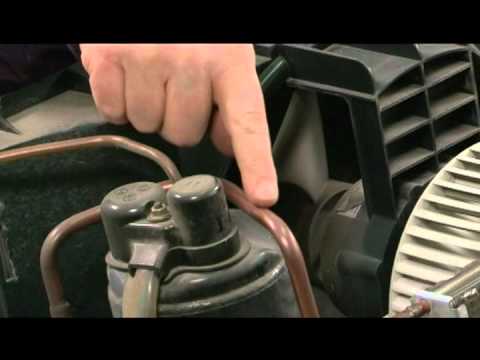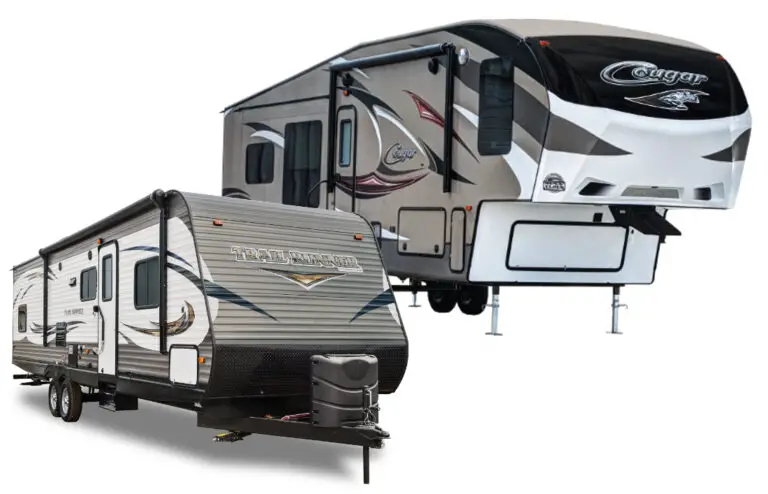Can You Add Freon to a Rv Air Conditioner
Yes, it is possible to add Freon to an RV air conditioner. Introducing refrigerant into the system can help restore its cooling capabilities.
RV air conditioners are crucial in providing comfort during travel and camping trips. However, these units may lose their cooling power over time due to a refrigerant leak or other issues. One potential solution is to add Freon, the commonly used refrigerant, to the system.
The RV air conditioner can regain its cooling ability and keep the interior comfortable even on warm days. We will explore the process of adding Freon to an RV air conditioner step-by-step.
We will also discuss some precautions and tips to ensure smooth and successful task completion. So, let’s dive in and learn how to add Freon to an RV air conditioner.
Understanding The Functioning Of An RV Air Conditioner
An RV air conditioner is a crucial component that helps to maintain a comfortable temperature inside your recreational vehicle during hot summer days. Understanding its functioning and components can help you make informed decisions when it comes to maintaining and troubleshooting your RV air conditioner.
The main components of an RV air conditioner include the compressor, condenser, evaporator, expansion valve, and refrigerant. The compressor plays a vital role in pressurizing the refrigerant gas, and the condenser dissipates the heat extracted from the RV interior. The evaporator absorbs heat from inside the RV by evaporating the liquid refrigerant, while the expansion valve controls the flow and pressure of the refrigerant.
The working principle of an RV air conditioner involves the use of refrigerant to cool and dehumidify the air inside the RV. This refrigeration cycle starts with the compressor compressing the refrigerant gas, which then flows to the condenser where it loses heat and gets converted into a high-pressure liquid. The liquid refrigerant passes through the expansion valve, where it undergoes a pressure drop, causing it to evaporate and absorb heat from the air. Finally, the gas refrigerant returns to the compressor to repeat the cycle.
Signs That Your RV Air Conditioner Needs Refrigerant
Signs that Your RV Air Conditioner Needs Refrigerant
A properly functioning RV air conditioner is essential for a comfortable camping experience. However, over time, the refrigerant in your AC unit may be depleted, causing various issues. Poor cooling performance is one of the most common signs that your RV air conditioner needs refrigerant. If you notice that your AC unit is not cooling your RV as efficiently as it used to, it may be time to add refrigerant. Another indication is frequent cycling on and off. If your AC unit is turning on and off frequently, it could be a sign that it is struggling to maintain the desired temperature due to low refrigerant levels. Additionally, ice buildup on the evaporator coils is a definite red flag. When there is insufficient refrigerant, the coils can become excessively cold, leading to ice formation. If you observe any of these signs, it is important to address the issue promptly to ensure optimal cooling performance and prevent further damage to your RV air conditioner.
The Process Of Adding Freon To An RV Air Conditioner
To add Freon to your RV air conditioner, follow these step-by-step instructions:
- First, gather the necessary tools and materials, which include an air conditioning manifold gauge set, a can of R-22 or R-410A Freon, and a pair of safety goggles.
- Next, ensure that the RV is parked in a well-ventilated area and that the air conditioner is turned off.
- Locate the access ports on the air conditioning unit. The low-pressure port is typically labeled with an “L” or “LP,” while the high-pressure port is labeled with an “H” or “HP.”
- Put on the safety goggles to protect your eyes from potential hazards.
- Connect the manifold gauge set to the RV air conditioner by attaching the blue hose to the low-pressure port and the red hose to the high-pressure port.
- Slowly open the valves on the manifold gauge set to release any existing refrigerant.
- Once the gauge readings stabilize, close the valves and remove the hoses from the air conditioner.
- Shake the can of Freon well and attach it to the piercing valve on the gauge set.
- Open the valve on the can to allow the Freon to flow into the air conditioner, following the manufacturer’s recommended dosage.
- Close the valve on the can and disconnect it from the gauge set when finished.
- Finally, check the air conditioner’s performance to ensure it is cooling properly.
- Air conditioning manifold gauge set
- R-22 or R-410A Freon
- Safety goggles
- Ensure proper ventilation when working with Freon.
- Wear safety goggles to protect your eyes from potential hazards.
- Follow the manufacturer’s instructions and recommended dosage when adding Freon.
- Keep the air conditioner turned off while working on it.
- Properly dispose of any used or empty Freon cans.
Common Mistakes To Avoid When Adding Freon To An Rv Air Conditioner
Adding Freon to an RV air conditioner is a common task for many owners, but it is important to avoid making certain mistakes. One common mistake is overcharging the system. Overfilling the air conditioner with Freon can lead to irreparable damage and decrease its efficiency. It is crucial to follow the manufacturer’s guidelines and add the recommended amount of Freon.
Using the incorrect refrigerant type is another mistake to avoid. Each RV air conditioner has specific requirements for the type of refrigerant it requires. Using the wrong type can cause damage to the system and result in poor cooling performance.
Neglecting regular maintenance is also a mistake that can impact the performance of an RV air conditioner. Regular maintenance includes cleaning the filters, coils, and ensuring proper airflow. Neglecting these tasks can lead to reduced cooling efficiency and higher energy consumption.
Alternative Solutions For Improving Rv Air Conditioner Performance
When it comes to improving the performance of your RV air conditioner, there are several alternative solutions that you can consider. One of the first steps you can take is to clean and unclog the air filters regularly. This will ensure that the air conditioner can function at its optimal efficiency by allowing proper airflow. Additionally, checking and adjusting the thermostat settings can also make a significant difference in the cooling performance of your RV air conditioner. Ensuring that the thermostat is set to the appropriate temperature will help maintain a comfortable environment inside your RV.
Another solution to consider is insulating your RV to enhance cooling efficiency. By adding insulation to the walls, ceiling, and floors, you can minimize the amount of hot air entering the RV and keep the cool air trapped inside. This will reduce the strain on the air conditioner and improve its overall performance. Moreover, sealing any gaps or leaks around windows, doors, and vents can also prevent hot air from entering and cool air from escaping.
By following these alternative solutions, you can maximize the performance of your RV air conditioner and ensure a comfortable and cool environment inside your RV.

Credit: www.rvtravel.com
The Importance Of Professional Help For Rv Air Conditioner Refrigerant Service
When it comes to maintaining and servicing your RV air conditioner, hiring a professional technician is essential. A trained technician has the knowledge and expertise to handle refrigerant services efficiently, ensuring optimum performance and longevity of the unit.
One of the major benefits of hiring a professional technician for refrigerant service is their detailed explanation of the process. They will thoroughly explain the steps involved in the refrigerant service, addressing any concerns or questions you may have.
Additionally, a reliable HVAC service provider will guide you in choosing the right refrigerant for your RV air conditioner. They will consider factors like the manufacturer’s specifications and environmental regulations to ensure the correct refrigerant is used.
Refrigerant service should never be taken lightly, as improper handling can lead to costly repairs or even the need to replace the entire unit. By investing in professional help, you can avoid potential damage and enjoy a properly functioning RV air conditioner.
Diy Vs Professional Approach: Adding Freon To An Rv Air Conditioner
Adding Freon to an RV air conditioner is a task that can be approached either DIY or by hiring a professional. Both options have their pros and cons:
- DIY Refrigerant Service Pros: It can save you money since you don’t have to pay for professional services. It provides an opportunity to learn and be hands-on with your RV’s air conditioning system.
- DIY Refrigerant Service Cons: It requires a good understanding of the RV air conditioner system and its components. Mishandling or improper refrigerant charge can lead to further damage or inefficiency in the cooling system.
Before deciding on the approach, consider the following factors:
- Level of experience and knowledge in handling refrigerants.
- Availability of necessary tools and equipment.
- An assessment of the severity of the problem. Some refrigerant leaks may require professional expertise.
If you choose the DIY route, it is crucial to rely on recommended resources for guidance. These resources can include step-by-step tutorials, instructional videos, and reliable forums that offer troubleshooting tips and advice.
Maintaining And Extending The Life Of An Rv Air Conditioner
Regular cleaning and maintenance is essential for maintaining and extending the life of an RV air conditioner. By cleaning the filters and removing any debris from the unit, you can ensure that air flows smoothly and efficiently. It is also important to inspect the condenser coils regularly and clean them if necessary. Monitoring the performance of the air conditioner is crucial to catch any potential issues early on. If you notice any strange noises, leaks, or reduced cooling, it may be a sign of a problem that needs to be addressed. Maximizing the lifespan of your RV air conditioner can be achieved by following a few simple tips. Firstly, avoid running the unit continuously and give it time to rest. Secondly, protect the unit from excessive heat and direct sunlight whenever possible. Lastly, consider adding an RV air conditioner cover to shield it from the elements when not in use. By following these steps, you can ensure that your RV air conditioner will continue to provide cooling comfort for years to come.
Frequently Asked Questions On Can You Add Freon To A Rv Air Conditioner
Can I Add Freon To My Rv Air Conditioner Myself?
Yes, you can add Freon to your RV air conditioner yourself, but it is not recommended. Handling refrigerants requires specialized equipment and knowledge to prevent damage to your unit or potential harm. It is best to hire a professional technician with experience in RV air conditioner repairs.
Conclusion
It is crucial to have a basic understanding of how an RV air conditioner functions and whether it is possible to add Freon to it. While it may be tempting to attempt to recharge the system yourself, it is strongly recommended to consult with a professional technician.
They have the expertise and knowledge to properly diagnose and repair any issues with your RV air conditioner, ensuring optimum performance and longevity.
Taking this step will save you time, money, and potential damage to your unit in the long run.







